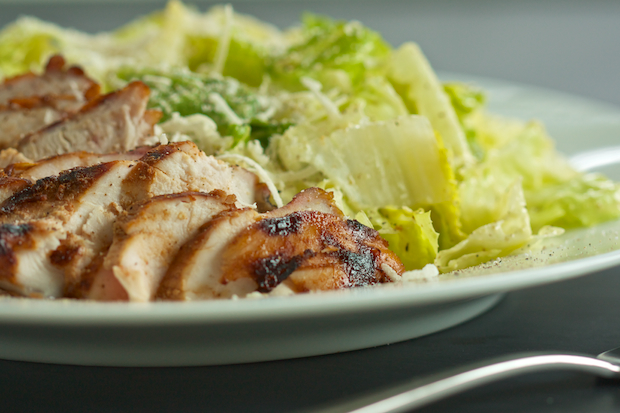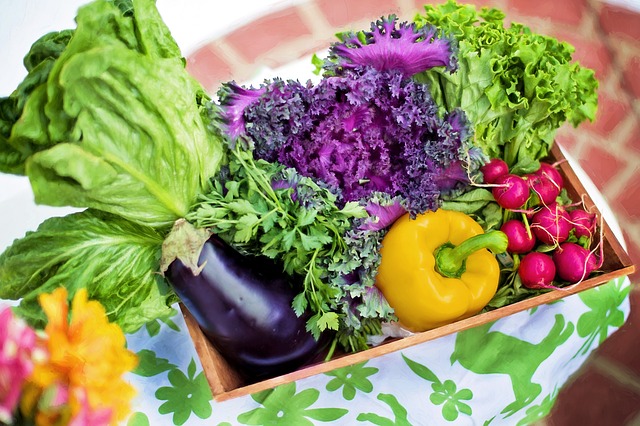A vegetarian eating plan, also known as plant based eating, is based on a diet of grains, fruits, vegetables, nuts, and seeds, with occasional use of dairy and egg products. This style of eating has existed since the beginning of recorded history. As early as 600 B.C.E., a vegetarian movement was founded in ancient Rome. Vegetarian eating became popular in England and the United States in the mid-nineteenth century. For many individuals, their whole lifestyle is defined by their vegetarian eating. In 1998, 7 percent of American adults considered themselves to be vegetarians.
Types of Vegetarians
There are several vegetarian eating styles. Most vegetarians consider themselves lacto-ovo vegetarians, meaning they generally eat dairy and egg products, but do not include meat, poultry, or fish in their diet. Lacto vegetarians eliminate all animal foods except dairy products. Total vegetarians, or vegans (pronounced VEE-guns), eliminate all animal products. Individuals who occasionally eat meat, poultry, or fish consider themselves semi-vegetarian.
Most individuals who choose a vegetarian eating style want to be healthier and lower their risk for disease. Others are concerned about the environment and the cost of raising animals for food. Some do not agree with the inhumane treatment and killing of animals for food. There are also a number of individuals who choose vegetarian eating for religious purposes.
Benefits of Vegetarianism
Research has shown a number of health benefits related to vegetarian eating. Heart disease, high blood pressure, adult-onset diabetes, obesity, osteoporosis, and certain cancers occur less often in people who are vegetarian. Science has demonstrated that these health benefits are related to healthful food choices. Eating whole grains, fruits, vegetables, nuts, and seeds provides the body with the ammunition needed to fight disease and illness. A diet high in meat, saturated fat, milk, cheese, and butter does not provide the same health benefits.
Nutritional Adequacy
Almost every food contains protein. Even though animal foods are high in protein, they are not the only foods able to supply protein, which is necessary for the growth and maintenance of the body. Sources of protein in the vegetarian diet include cooked dried beans, nuts, seeds, and soy products.
Dairy and egg products provide vitamin B12. For the vegetarian, foods such as fortified cereals and soymilk can provide the vitamin B12 needed by the body. Dairy products are also an excellent source of calcium, along with calcium-fortified soymilk, tofu processed with calcium, broccoli, nuts, collard greens, and calcium-fortified orange juice. High-calcium foods are important for strong bones and should be consumed early in life to build the body’s calcium stores.
Although red meat is a major source of iron in Western diets, vegetarians actually have higher iron intakes than nonvegetarians. Plant sources of iron include beans, fortified cereals, whole grain products, tofu, dark green leafy vegetables, seeds, prune juice, and blackstrap molasses. Including a vitamin C–rich food with meals will help to increase the body’s absorption of iron.
The American Dietetic Association has stated that “appropriately planned vegetarian diets are healthful, are nutritionally adequate, and provide health benefits in the prevention and treatment of certain diseases” (Journal of the American Dietetic Association, 1317).
Vegetarianism at Different Ages
When choosing vegetarian eating, it is important to be aware that there are special nutritional needs at different stages of life. Pregnancy and breast-feeding require additional calories and nutrients. A well-planned vegetarian diet can provide these in the amounts needed for a healthy mother and baby.
During infancy, childhood, and the teenage years, adequate calories to sustain proper growth are necessary. This usually is not a problem for infants because they are either breastfed or on formula. During childhood and the teenage years, meals should consist of high-calorie, high-nutrient (good sources of protein, vitamins, and minerals) foods. Because many plant foods are low in calories and high in fiber, it is easy for the child or teenager to feel full before eating an adequate amount of calories. Moderate amounts of high-fat foods can help to increase calorie intake. In-between-meal snacks are useful, as they also provide needed calories. Healthy snacks include items like peanut-butter sandwiches and milk (or soy milk), a melted cheese and bagel sandwich, fruit smoothies, and, after three years of age, dried fruits, nuts, and seeds.
Older adults may have difficulty obtaining vitamins D and B12, as well as calories. Many people do not
include beans, fortified cereals, whole grain products, tofu, dark green leafy vegetables, seeds, prune juice, and blackstrap molasses. Including a vitamin C–rich food with meals will help to increase the body’s absorption of iron.
The American Dietetic Association has stated that “appropriately planned vegetarian diets are healthful, are nutritionally adequate, and provide health benefits in the prevention and treatment of certain diseases” (Journal of the American Dietetic Association, 1317).
Vegetarianism at Different Ages
When choosing vegetarian eating, it is important to be aware that there are special nutritional needs at different stages of life. Pregnancy and breast-feeding require additional calories and nutrients. A well-planned vegetarian diet can provide these in the amounts needed for a healthy mother and baby.
During infancy, childhood, and the teenage years, adequate calories to sustain proper growth are necessary. This usually is not a problem for infants because they are either breastfed or on formula. During childhood and the teenage years, meals should consist of high-calorie, high-nutrient (good sources of protein, vitamins, and minerals) foods. Because many plant foods are low in calories and high in fiber, it is easy for the child or teenager to feel full before eating an adequate amount of calories. Moderate amounts of high-fat foods can help to increase calorie intake. In-between-meal snacks are useful, as they also provide needed calories. Healthy snacks include items like peanut-butter sandwiches and milk (or soy milk), a melted cheese and bagel sandwich, fruit smoothies, and, after three years of age, dried fruits, nuts, and seeds.
Older adults may have difficulty obtaining vitamins D and B12, as well as calories. Many people do not get enough sunlight for their bodies to produce the recommended amount of vitamin D, which is essential for Fresh tofu is packed in water for shipping, which helps it retain its flavor and form. Tofu is made from soybean curds. It provides all the excellent nutritive properties of soy, including high-quality protein. [© Michael S. Yamashita/Corbis. Reproduced by Corbis Corporation.]absorbing calcium and preventing osteoporosis. Using breakfast cereals and soy products fortified with vitamin D is important, though it may also be necessary to take a supplement because the absorption of vitamin B12 decreases as people get older.
It is important to eat foods that are fortified with B12, such as soymilk, or to take a B12 supplement. Older adults are also at risk for not getting enough calories, because the appetite tends to decrease with age. Eating foods that are low in calories and high in fiber makes it difficult to get the needed energy intake to stay healthy. Eating high-calorie, nutrient-dense foods and in-between-meal snacks is important.
Careful planning ensures that vegetarian eating will provide the nutrition needed to stay healthy. One helpful tool is the Vegetarian Food Guide Pyramid, which provides guidelines for selecting foods and the appropriate portion sizes.
Using a variety of foods is essential to good health when following the Food Guide Pyramid. One single food cannot provide the body with all the nutrition it needs. Five portions of fruits and vegetables should be consumed daily, including a citrus fruit and a dark green leafy vegetable. Whole grains should be eaten whenever possible; these have more nutrients and fiber than processed grains such as white bread and white rice. Proteins should be chosen wisely. While dairy products and eggs are good protein sources, they are also high in saturated fats and cholesterol. Nuts, seeds, beans, and soy products should be part of the diet.
A carefully planned vegetarian diet can provide the nutrients needed for health at any time during the life cycle. Most individuals who choose this eating style do so because of the many health benefits associated with vegetarian eating, including reduced risk for heart disease, diabetes, and some cancers.



